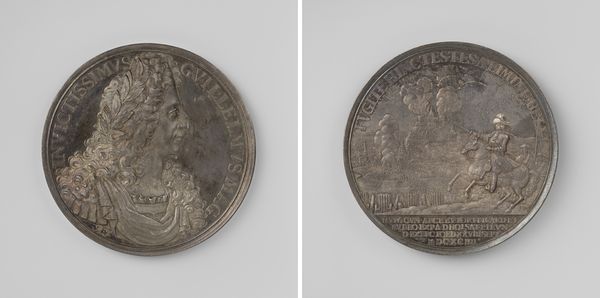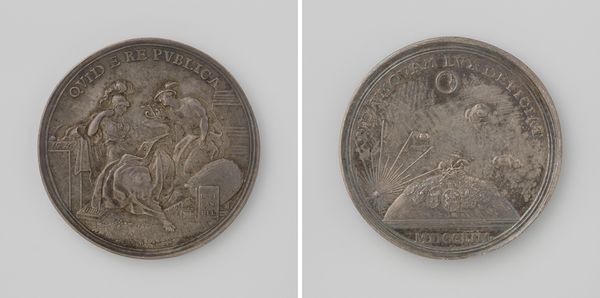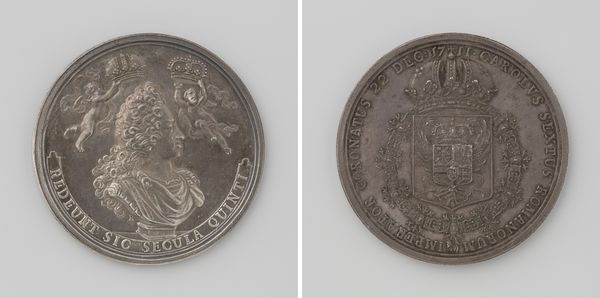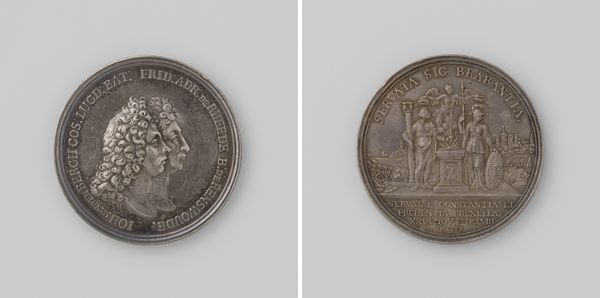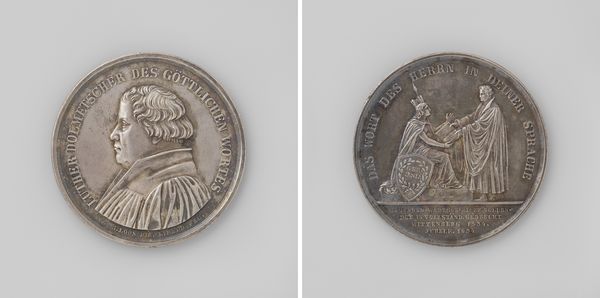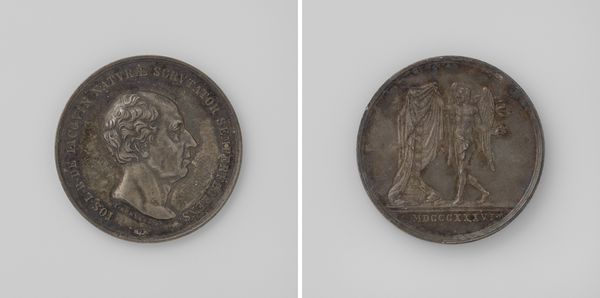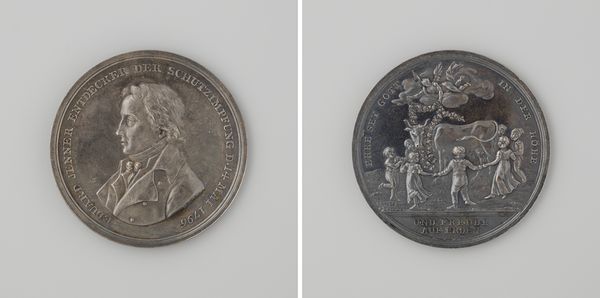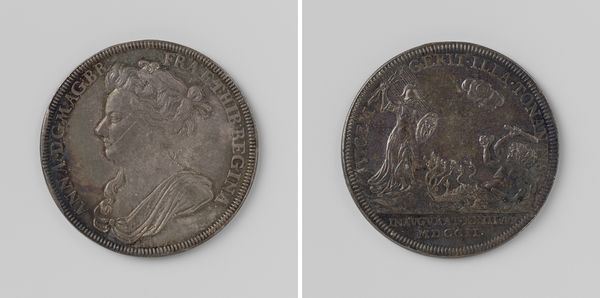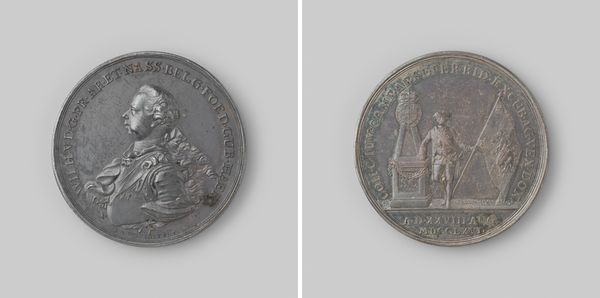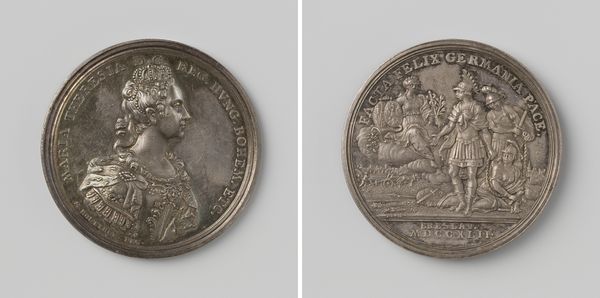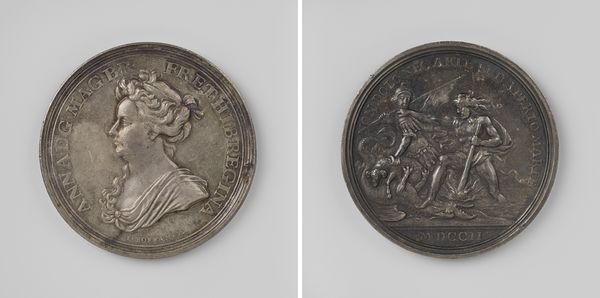
metal, sculpture
#
portrait
#
baroque
#
metal
#
sculpture
#
sculpture
#
history-painting
Dimensions: diameter 3.7 cm, weight 18.19 gr
Copyright: Rijks Museum: Open Domain
Curator: This medal commemorates the death of Anna of Hanover, Princess of Orange-Nassau, in 1759. Nicolaas van Swinderen is credited with its creation, employing metal to craft these intricate details. Editor: It's somber, isn't it? The cool sheen of the metal only amplifies that sense of loss. I’m immediately drawn to the allegorical figure weeping beside the urn. Curator: Commemorative medals like these were potent tools of public sentiment, especially amongst the aristocracy. This served not just as remembrance, but as a display of lineage and political alliance. The image of the princess on the one side certainly played to popular ideas of the time. Editor: Absolutely. And notice how Anna is portrayed in profile, almost like a Roman empress. It elevates her status, associating her with classical virtues and power. That royal coat-of-arms, paired with the grieving female figure on the opposite side...it's a language of loss and legacy. And that lion! Is that symbol meant to echo steadfast courage, even in grief? Curator: Most definitely, the lion is a symbol that evokes notions of courage and also of the royal lineage it represents. We have to remember that imagery such as a figure weeping for instance was very conventional and served to reinforce collective emotion. And as for her portrait it helps bolster legitimacy and cement their position within society. Editor: It’s powerful how these carefully chosen emblems, even on such a small scale, can convey such immense weight. There's almost something…tragic, though noble, in the controlled grief on display. Curator: Indeed, it's a crafted image of grief, tailored to public consumption and political aims. The metal acts almost as a frozen testament to this delicate balance. Editor: Considering how history painting in Baroque can influence political image, this metal becomes a way to both consolidate an individual as well as a public symbol. A curious token of identity meant to be shared. Curator: It’s remarkable how a relatively small object like this encapsulates such a grand narrative of power, loss, and remembrance. Editor: Agreed. These small works offer us a really vivid and quite intimate glance into the art and emotion that has captured public feeling.
Comments
No comments
Be the first to comment and join the conversation on the ultimate creative platform.

